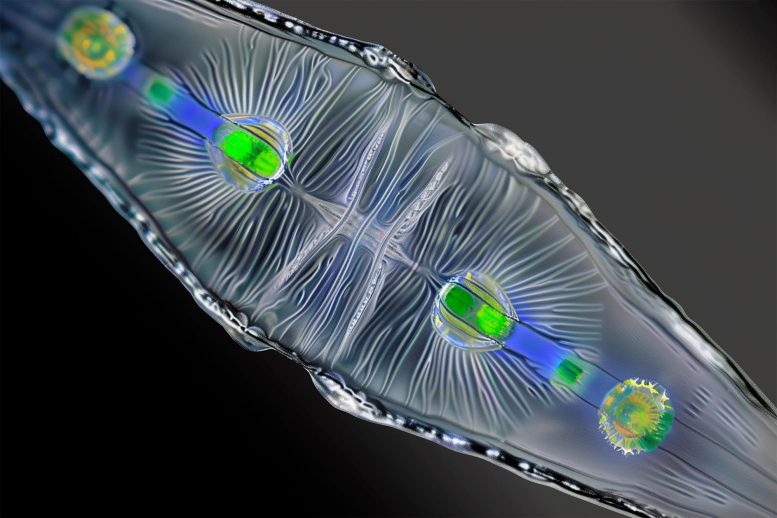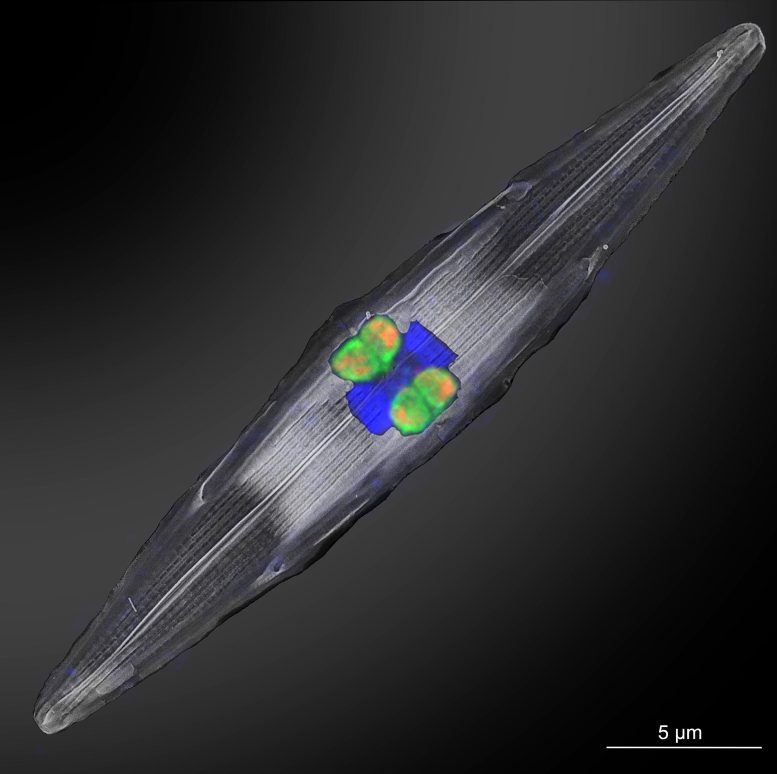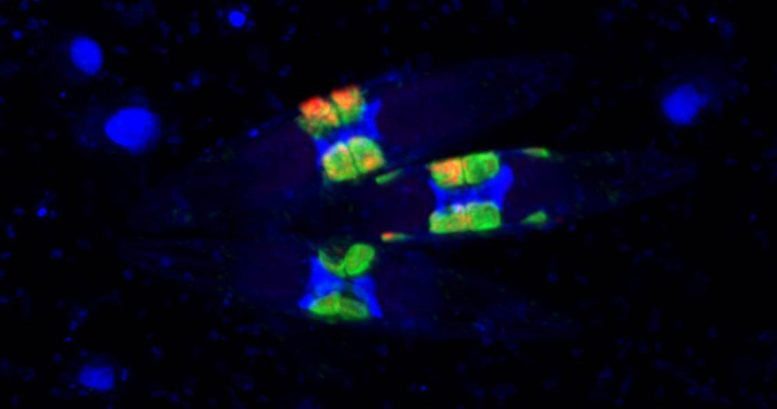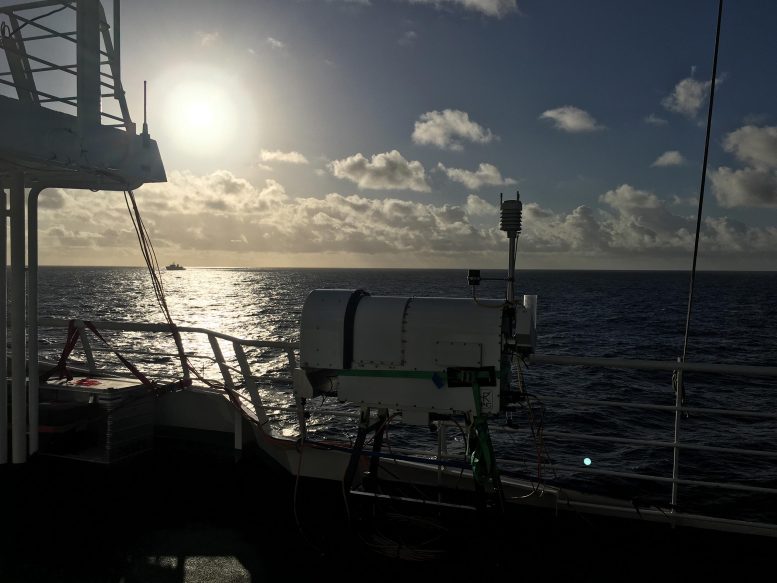
Scientists have found that Rhizobia bacteria, known for their partnership with legumes, can also form similar relationships with marine diatoms. This discovery provides new understanding about a significant part of marine nitrogen fixation and has implications for both marine biology and agricultural technology. Credit: SciTechDaily.com
A groundbreaking study shows that Rhizobia bacteria can help fix nitrogen in cooperation with marine diatoms, a finding that could have important effects on agriculture and marine ecosystems.
Nitrogen is crucial for all living organisms. It also controls the growth of crops on land and the tiny oceanic plants that produce half the planet's oxygen.
The largest nitrogen source is atmospheric nitrogen gas, but plants cannot use it directly. Instead, crops like soybeans, peas, and alfalfa, known as legumes, have formed partnerships with Rhizobial bacteria to convert atmospheric nitrogen into a usable form, contributing to the production of proteins in food.
Researchers from the Max Planck Institute for Marine Microbiology in Bremen, Germany, have revealed that Rhizobia can also establish similar partnerships with small marine plants called diatoms. This breakthrough solves a long-standing marine mystery and could have significant applications in agriculture.

Rhizobial nitrogen-fixing symbionts (labeled in orange and green using genetic probes) inside diatoms collected from the tropical North Atlantic. The diatom nucleus is displayed in bright blue. Credit: Mertcan Esti/Max Planck Institute for Marine Microbiology, Bremen, Germany
An enigmatic marine nitrogen fixer residing within a diatom
For a long time, it was thought that most nitrogen fixation in the oceans was done by photosynthetic organisms called cyanobacteria. However, in large ocean areas, there were not enough cyanobacteria to account for the measured nitrogen fixation. This led to a controversy, with many scientists suggesting that non-cyanobacterial microorganisms must be responsible for the “missing” nitrogen fixation.
“For years, we have been discovering gene fragments that encode the nitrogen-fixing enzyme nitrogenase, which seemed to belong to a specific non-cyanobacterial nitrogen fixer,” explains Marcel Kuypers, the lead author of the study. “But we could not figure out exactly which mysterious organism it was and therefore did not know if it was important for nitrogen fixation.”

A group of diatoms with their fluorescently-labeled symbionts. Credit: Mertcan Esti/Max Planck Institute for Marine Microbiology, Bremen, Germany
In 2020, the scientists traveled from Bremen to the tropical North Atlantic to participate in an expedition involving two German research vessels. They gathered hundreds of liters of seawater from the area, where a large portion of global marine nitrogen fixation occurs, in the hopes of identifying and quantifying the importance of the mysterious nitrogen fixer. It took them the next three years to finally piece together its genome.
Bernhard Tschitschko, the first author of the study and an expert in bioinformatics, says that it took a long and careful process of investigation, but ultimately, the genome helped solve many mysteries. The first mystery was figuring out the identity of the organism. Tschitschko explains that even though they knew the nitrogenase gene came from a Vibrio-related bacterium, the actual organism turned out to be closely related to the Rhizobia that live in symbiosis with legumes. This, along with its surprisingly small genome, raised the possibility that the marine Rhizobia might be a symbiont.
The first known symbiosis of this type.
Motivated by these discoveries, the authors created a genetic probe that could be used to make the Rhizobia glow under fluorescent light. When they used it on the original seawater samples from the North Atlantic, their suspicions about it being a symbiont were quickly confirmed. Kuypers says, “We were finding sets of four Rhizobia, always sitting in the same spot inside the diatoms.” This is the first known case of a symbiosis between a diatom and a non-cyanobacterial nitrogen fixer.
The scientists gave the newly discovered symbiont the name Candidatus Tectiglobus diatomicola. Once they finally figured out the identity of the missing nitrogen fixer, they focused on understanding how the bacteria and diatom live in partnership. Using a technology called nanoSIMS, they were able to show that the Rhizobia exchanges fixed nitrogen with the diatom in exchange for carbon.
And it puts a lot of effort into it: “In order to support the diatom’s growth, the bacterium fixes 100-fold more nitrogen than it needs for itself,” explains Wiebke Mohr, one of the scientists on the paper.

A gathering at sea. The two research vessels involved in the study (R/V Meteor and R/V Maria S. Merian) met a couple of times during the expedition. Credit: Wiebke Mohr/Max Planck Institute for Marine Microbiology, Bremen, Germany
A vital role in maintaining marine productivity.
Next the team went back to the oceans to find out how widespread the new symbiosis might be in the environment. It quickly turned out that the newly discovered partnership is found throughout the world’s oceans, especially in regions where cyanobacterial nitrogen fixers are rare. These small organisms are likely significant contributors to total oceanic nitrogen fixation, and therefore play a crucial role in maintaining marine productivity and the global oceanic uptake of carbon dioxide.
A promising candidate for agricultural engineering?
In addition to its importance to nitrogen fixation in the oceans, the discovery of the symbiosis hints at other exciting opportunities in the future. Kuypers is particularly thrilled about what the discovery means from an evolutionary perspective.
“The evolutionary adaptations of Ca. T. diatomicola are very similar to the endosymbiotic cyanobacterium UCYN-A, which functions as an early-stage nitrogen-fixing organelle. Therefore, it’s really tempting to speculate that Ca. T. diatomicola and its diatom host might also be in the early stages of becoming a single organism.”
Tschitschko agrees that the identity and organelle like nature of the symbiont is very interesting, as similar organelles have previously only been found in cyanobacteria. However, the discovery of these organelles in the Rhizobiales is particularly exciting due to the importance of these bacteria in agriculture. The small size and organelle-like nature of the marine Rhizobiales make them a strong candidate for potentially engineering nitrogen-fixing plants in the future.
The scientists will now continue their research on the newly found symbiosis to determine if similar ones exist in the oceans.
Reference: “Rhizobia-diatom symbiosis fixes missing nitrogen in the oceanRhizobia-diatom symbiosis fixes missing nitrogen in the ocean” 9 May 2024, Nature.
DOI: 10.1038/s41586-024-07495-w



